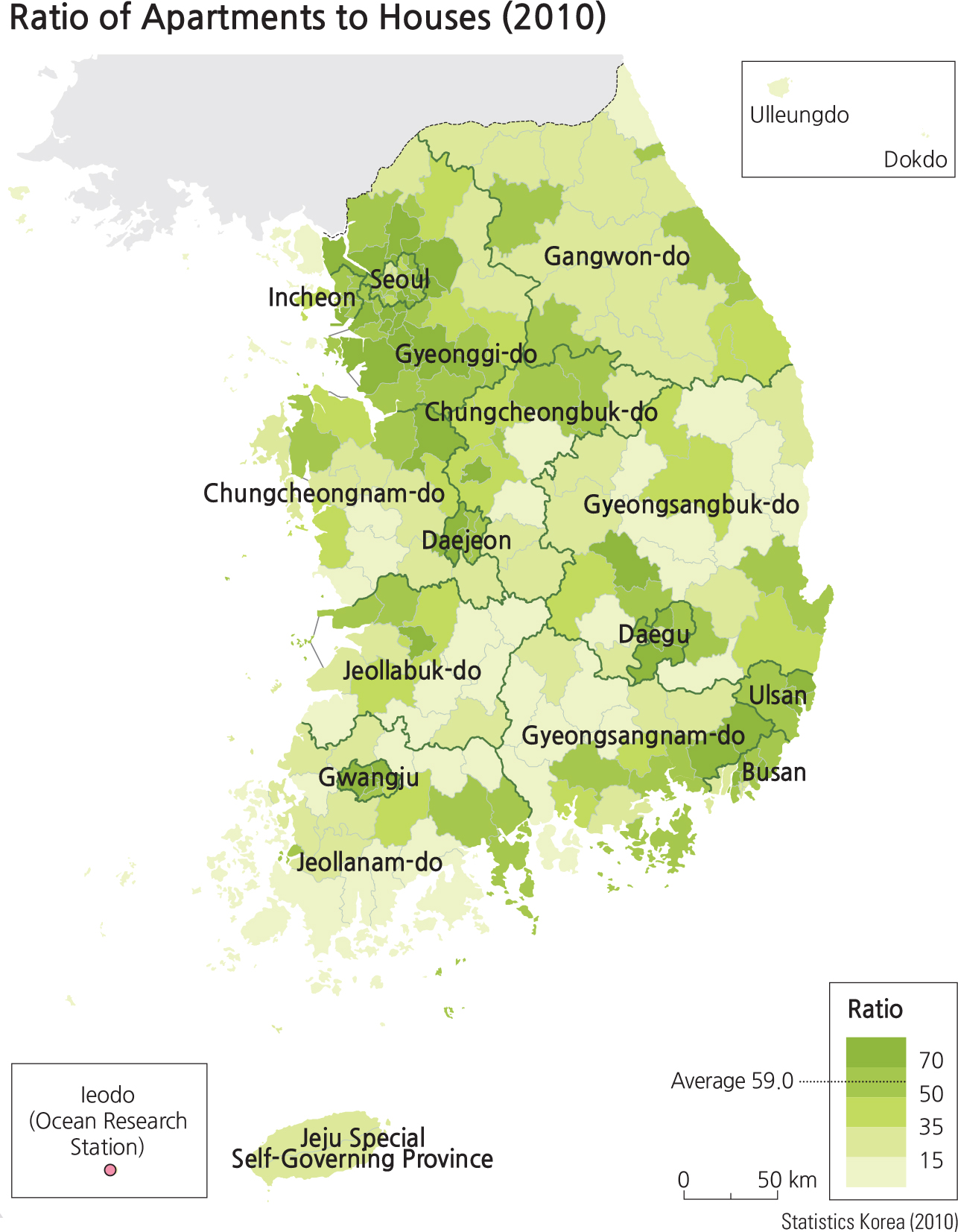for Children
One of the most striking things about modern Korea is the high number of people living in multi-unit dwellings. In large, densely populated cities, apartments were built in order to efficiently use the limited urban space. Apartments became popular because amenities, educational facilities, and commercial facilities are often located in the apartment complex. In addition, high-rise apartments occupy most of the residential areas in many newly constructed housing zones, such as in new cities in metropolitan areas. Apartments are steadily increasing relative to other housing types, accounting for about 60 percent of all housing in Korea, according to the 2010 census. In addition, including row housing and multiplex housing, many Koreans today live in multi-unit dwellings. Recently, a large number of multi-unit dwellings have been constructed even in suburban or rural village centers. In addition, high-rise commercial complexes, in which a low-rise is used for commercial facilities and a high-rise for residential purposes, have increased in some metropolitan areas.
The areas with a high proportion of multi-family houses are found in the sections having a relatively long history of developed dwellings. In these areas, the separation between residential areas and business areas is not distinct. These multi-household homes have been gradually transformed into multi-unit dwellings, such as apartments or multiplexes. In addition, there are sections of Seoul that consist of apartments only. These apartment complex areas have many families, with a large majority of them having school-age children. Thus, there are large numbers of schools and educationrelated facilities as well as small-sized neighborhood facilities that are part of the individual apartment complexes. These apartment complex areas were designed, through zoning, to share a large central commercial facility. Lastly, multiplex houses have recently developed into so-called “illas.”Some multiplex houses are near city centers and are often preferred by young workers. The map at right shows the ratio of apartments to houses. Darker green areas have more apartments.
|


